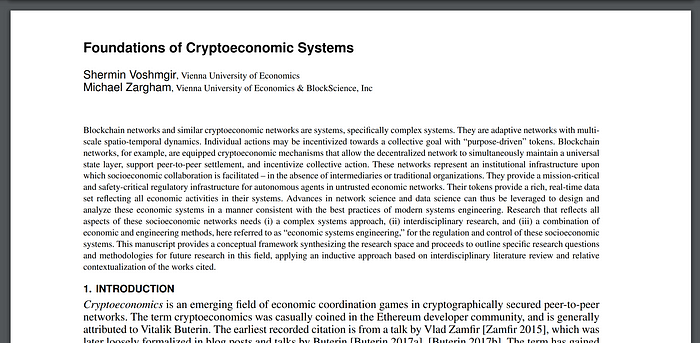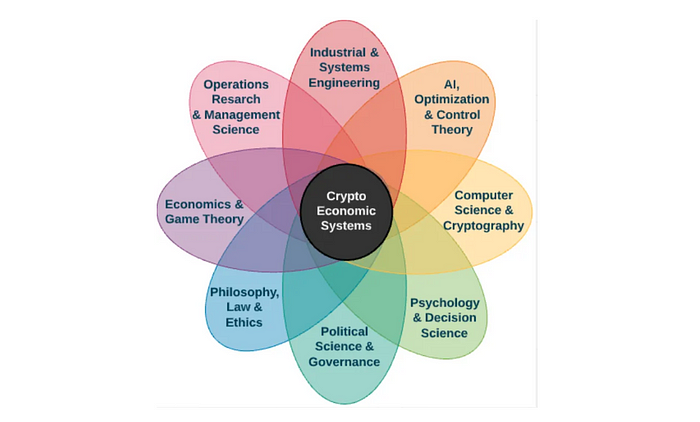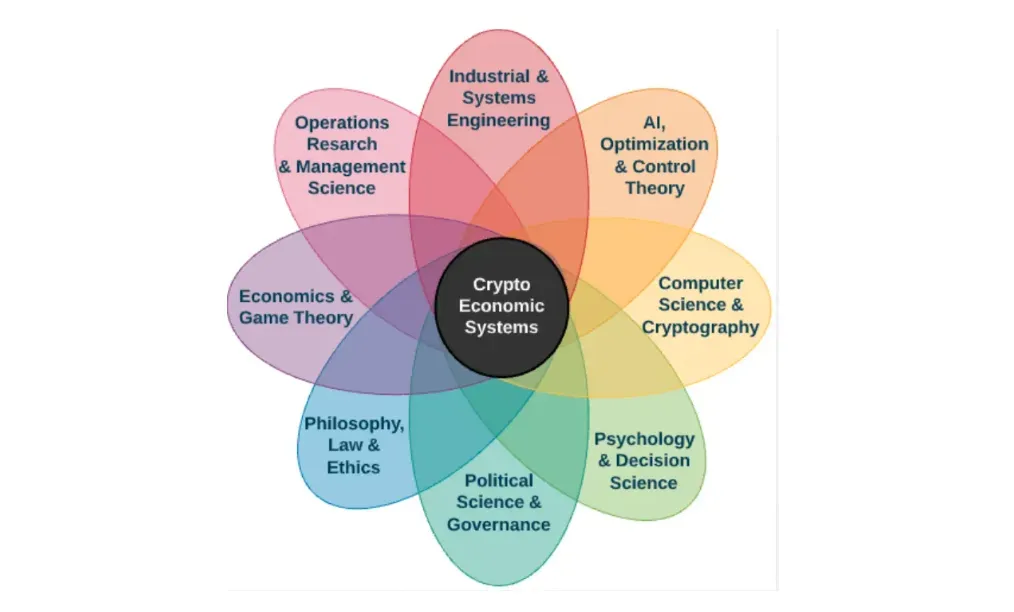This article introduces the Paper “Foundations of Cryptoeconomic Systems” by Shermin Voshmgir and Michael Zargham, published at the University of Vienna Institute for Cryptoeconomics.
TL;DR
The paper “Foundations of Cryptoeconomic Systems” presents the foundational knowledge for a definition of cryptoeconomic systems. To build this foundation, the paper evaluates the term “cryptoeconomics” in different contexts and combines each perspective into a proposed definition that can then be applied as a framework for understanding and analyzing these systems.
In this article, we will summarize three of the perspectives presented as foundational knowledge for the proposed definition of cryptoeconomic systems. We will also discuss how this definition has been applied as a framework to help advance research topics related to cryptoeconomic systems.

Cryptoeconomics from the Perspective of Complex Systems
First, and possibly most important when trying to understand & analyze cryptoeconomic systems, is to view them through the lens of systems theory as a complex system.
Systems theory tells us that cryptoeconomic systems are a type of complex socio-economic system (Fig. 1). By applying tools from systems theory, we can discover “system dynamics, constraints, conditions and principles of cryptoeconomic systems, with the aim to understand, model and steer them.”
Cryptoeconomics from the Perspective of Interdisciplinarity
A multi-disciplinary approach has proven effective for solving the problems presented by complex systems. As a subset of complex systems, cryptoeconomic systems are also best approached with an interdisciplinary perspective.
In general, cryptoeconomic systems “provide coordination and scaling for resource allocation decisions”. Therefore, the types of problems that emerge, and the relevant disciplines best positioned to tackle them, tend to revolve around the core topic of resource allocation (Fig. 2).An effective multi-disciplinary approach involves refining the list of relevant disciplines according to the specific system and problem at hand, as well as creating a suitable environment to share insights. Common challenges to this approach can be managing disciplinary bias and communicating through domain specific terminology.

Cryptoeconomics from the Perspective of Multi-Scale Modeling
A multi-scale perspective is essential for building useful models of economic systems.
This perspective has a long history of being applied implicitly by many traditional economic schools of thought, and has been a recent topic of debate in macroeconomic theory (for example, the Lucas Critique, which points out the disconnect between micro- and macro-economic models). Today, the multi-scale perspective is also common in standard practices of systems engineering.
A multi-scale perspective includes three-levels: Micro, Meso, and Macro. Combining these three levels creates the basic structure of a multi-scale economic model that can be used as a tool to understand and analyze economic systems, including cryptoeconomic systems (Fig. 3).
A proper multi-scale model makes it possible to study interscale phenomena, such as emergence.
“Emergence closes the feedback loop of the macro, meso and micro level activities […] policy makers measure phenomena on a macro level, decide over new policies on a meso level, and implement these policies impacting agent behavior on a micro level, which in turn result in systemic effects that can only be measured on a macro level.” — Voshmgir & Zargham
This emergence feedback loop is shown in Figure 4, which also mirrors the basic structure of a multi-scale model described above.
The Proposed Definition of Cryptoeconomic Systems
The perspectives above help build the foundations for the unifying perspective and definition of cryptoeconomic systems proposed by the paper:
Cryptoeconomic systems are complex socioeconomic networks defined by:
- Individual autonomous actors
- Economic policies embedded in software, and
- Emergent properties arising from the interactions of those actors according to the rules defined by that software.
Further Research Areas
The paper concludes by exploring how the proposed definition could be applied to advance research related to “cryptoeconomic systems [as] an institutional infrastructure that facilitates a wide range of socio-economic interactions.”
As one example, in section 9.2, the research topic of data-driven economic systems is covered, and the paper proposes the following diagram to represent a “data driven regulatory process”:
In this diagram we can see how some of the foundational perspectives and the proposed definition of cryptoeconomic systems are being applied as a framework to better understand this area of research:
- Complex systems perspective — tools & methods from systems theory are being applied to identify system parts and express the relationships & inter-dependencies, with the goal to better understand the system
- Multi-scale modeling perspective — the diagram visualizes the macro (crypto-network), meso (algorithmic policies), and micro (human agents) levels of the system
- Interdisciplinary perspective — here we are problem-solving at the intersection of Governance, Control Theory, Economics, and more
Thank you for reading! And don’t forget, this article is only an introduction to the paper “Foundations of Cryptoeconomic Systems.” To dive deeper into the foundational knowledge from each perspective, and the potential areas of further research, be sure to read the original piece.
Liked the introduction provided by this article? Check out the other introductory articles on the BlockScience blog:
An Introduction to: Economic Games as Estimators An Introduction to: From Curved Bonding to Configuration SpacesAcknowledgements
This introduction article was written by Peter Hacker with feedback and edits from Jeff Emmett, and original publication by Shermin Voshmgir and Michael Zargham.
About BlockScience
BlockScience® is a complex systems engineering, R&D, and analytics firm. By integrating ethnography, applied mathematics, and computational science, we analyze and design safe and resilient socio-technical systems. With deep expertise in Market Design, Distributed Systems, and AI, we provide engineering, design, and analytics services to a wide range of clients including for-profit, non-profit, academic, and government organizations.


